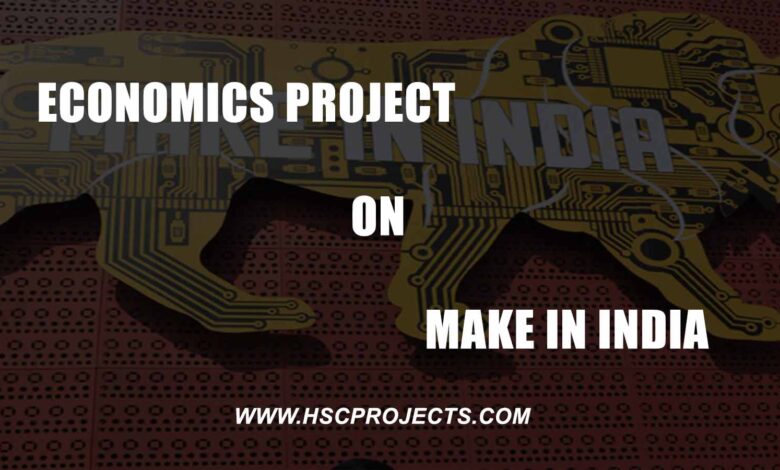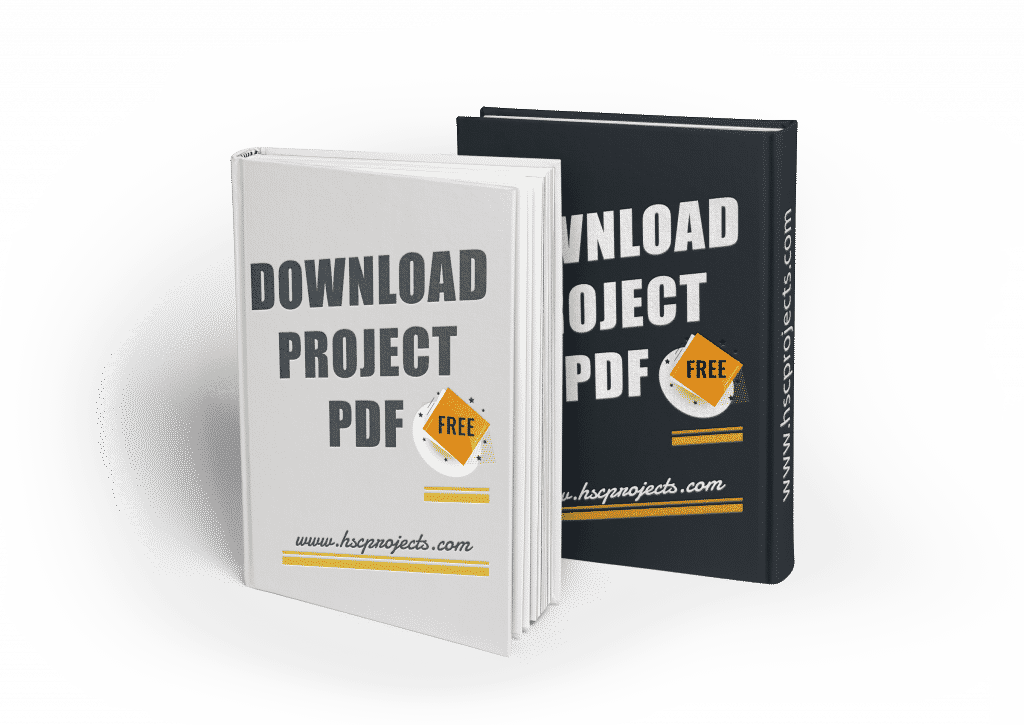
The Best Make in India Project Class 12 – Economics
INTRODUCTION
Make in India is an initiative launched by the Government of India to encourage national, as well as multi-national companies to manufacture their products in India. It was launched by Prime Minister Narendra Modi on 25 September 2014. India emerged, after the initiation of the program in 2015, as the top destination globally for foreign direct investment (FDI), surpassing the United States of America as well as the People’s Republic of China. In 2015, India received US $63 billion in FDI. The best way to learn about this is make in india project class 12 for high schoolers.
The scheme was launched on 25th September 2014 at a function at the Vigyan Bhawan.
PLANNING
In August 2015, Hindustan Aeronautics Ltd. (HAL) began talks with Russia’s Irkut Corp to transfer the technology of 332 components of the Sukhoi Su-30 MKI fighter aircraft under the Make in India program. These components, also called line replacement units (LRUs), refer to both critical and non-critical components and fall into four major heads, such as Radio and Radars; Electrical & Electronic Systems; Mechanical systems, and instrument Systems.
The Ministry of Defense is auctioning a 600 billion contract to design and build a Fighting Infantry Combat Vehicle in India. It will be awarded in 2016.
In February 2016, Lockheed Martin stated that it was “ready to manufacture F-16 in India and support the Make in India initiative”, although it did not announce any time frame. In February 2017, Lockheed stated that it intended to manufacture the F-16 block – 70 aircraft with a local partner in India if the Indian Air Force agreed to purchase the aircraft.
In May 2017, Union Cabinet approved the construction of 10 indigenously built Pressurized Heavy water Reactors (PHWRs).
LOGO OF MAKE IN INDIA

Make-in-India is a lion step, said Prime Minister, after launching the logo of his ambitious campaign to attract companies to India. The logo is the silhouette of a lion on the prowl, made entirely on cogs, symbolizing manufacturing, strength, and national pride. The national emblem, Ashok Chakra, also has four lions. In Indian folklore, the lion denotes the attainment of enlightenment, besides representing power, courage, pride, and confidence.
The logo adorns the brand new website makeinindia.com – for the campaign and all its brochures.
The website is a ready reckoner for data on 25 sectors.
APPLICATIONS

Make in India focuses on the following twenty-five sectors of the economy.
- Automobiles
- Automobile components
- Aviation
- Biotechnology
- Chemicals
- Construction
- Defense Manufacturing
- Electrical Machinery
- Electronic Systems
- Food processing
- IT and business process management
- Leather
- Media and Entertainment
- Mining
- Oil and gas
- Pharmaceuticals
- Ports and Shipping
- Railways
- Renewable Energy
- Roads and highways
- Space and Astronomy
- Textiles and garments
- Thermal power
- Tourism and hospitality
- Wellness
As per the new govt. policy 100% FDI is permitted in all sectors above, except for space (74%), defense (49%), and news media (26%)
WORDS IN SAY
“MAKE IN INDIA – This is a step of a lion; nobody can question the talent of our people after Mangalyan.”
If each of our millions of youngsters resolves to manufacture at least one such item, India can become a net exporter of .1, PM Narendra Modi, urges upon the youth, particular our small entrepreneurs that they would never compromise at least two counts:
- First, zero Deficit
- Second, Zero Effect.
ON THE INTERNET
- The Website
- Youtube
NUMERICAL EXPLANATION AND DIAGRAMMATIC REPRESENTATION
Why Make In India?
Gain in industrial profit -> Investment -> Industry -> Employments -> Rise in purchasing power
NUMERICAL EXPLANATION:

And the way to do this, according to Make in India, is to increase the share of manufacturing in India’s GDP to 25% by 2022, which is expected to generate approximately 100 million jobs for Indian workers. Responding to the lifting of foreign direct investment caps in several sectors, efforts to improve the ease of doing business, and, of course, the Prime Minister’s frenetic wooing of investment in foreign travels, gross FDI flows to India jumped 27% to $45 billion in 2015-16. Even the Finance ministry’s usually measured Economic Survey 2015-16 touted this as a success for Make In India.
Consider the most recent data from RBI, broken up by sector, since Make in India specifically concerns manufacturing. After an encouraging jump to a record $ 9.6 billion in 2014-15, FDI in manufacturing fell to $8.4 billion in 2015 – 16.
Note that these numbers cover inflows approved by the RBI and other agencies and exclude share purchases, reinvested earnings, and so on. This pattern is consistent with data from the Department of Industrial Policy. And Promotion.
Furthermore, the percentage of FDI flowing to manufacturing, which has been in the range of 35-40% for the past four years, dropped to 23% in which 2015-16. Rather than manufacturing, services – think e-commerce providers like Amazon, Snapdeal, and Flipkart, ride-sharing services like Uber and Ola – seem to be drawing a greater share of investment.
PROS AND CONS OF THE MAKE IN INDIA SCHEME
ADVANTAGES

- The manufacturing sector-led growth of nominal and per capita gap. While India ranks 7th in terms of nominal GDP, it ranks a dismal 131st in terms of per capita GDP.
- Employment will increase manifold. They will augment the purchasing power of the common Indian, mitigate poverty, and expand the Consumer base for companies. Besides, it will help to reduce brain drain.
- Foreign Investment will bring technical expertise and creative skills, along with foreign capital. The concomitant credit rating upgrade will further woo investors.
- The export-oriented growth model will improve India’s BOP and help in accumulating foreign exchange reserves (which is very important).
- FIIs play a dominant role (relative to FDI) in the Indian Markets. However, FIIs are highly volatile, and the sudden endo of hot money from India can effect a nosedive in the bell-wether indices Make in India will give an unprecedented boost to FDI flows.
- The urge to attract investors will develop substantial policies toward improving the Ease of Doing Business in India. The Government of the day will have to keep its house in order (by undertaking groundbreaking reforms).
DISADVANTAGES

- From a theoretical perspective, Make in India will tend to violate the theory of comparative advantage. If it is not economically feasible to manufacture a commodity in India, it is best to import the same from a country that enjoys a comparative advantage in its production. International trade, after all, is welfare augmenting.
- Reiterating, India, unlike China, does not have the time advantage as it undertakes a manufacturing spree.
- Make in India will lead to an unsustainable focus on export promotion measures. One such measure is artificially undervaluing the rupee. This will have devastating consequences on the import bill.
- The relative neglect of the world economic scenario may not augur well for Make In India. With the US and Japan economies yet to recover from their economic crises with the EU floundering, one needs to be wary about the demand side of Make in India The ESP of the incumbent, RBI governor to Make For India should be put to good use.
CRITICISMS AND CONCERNS

The NDA government’s Make in India Campaign has till early October attracted INR 2000 cr. Worth investment proposals. The campaign has, despite this, found its share of critics. The topmost of these critics are leveled against the incumbent of govt. It has been felt that the government does not walk its talk – labor reforms and policy reforms that are fundamental for the success of the Make in India campaign have not yet been implemented. Several layoffs in companies such as Nokia India cast long shadows over the campaign
STUDENT’S CONCERN
According to my view “Make in India” program is the best program launched by any government yet, and significant achievements have been made under the Make in India initiative since its launch on 25th September 2014 which will help India in the long run for sure to become indigenous capable and lessen our key imports.
Make in India is an ambitious project, but it is one that India desperately needs to kickstart and sustain its growth momentum. With rent fewer policies toward this end, it is possible to make India the powerhouse of the manufacturing sector in the world.
CONCLUSION
India is a country rich in natural resources. Labour is plenty, and skilled labor is easily available, given the high rates of unemployment among the educated class of the country. With Asia developing as the outsourcing hub of the world, India is soon becoming the preferred manufacturing destination of most investors across the globe. Make in India is the Indian government’s effort to harness this demand and boost the Indian economy.
India ranks low on the “ease of doing business index.” Labour laws in the country are still not conducive to the Make in India campaign.
PREFACE
This is to certify that Simran Jain of class Xll of St. Sophia Sr. Sec. School, Paschim Vihar, has completed her project under my supervision. She has taken care and shown the utmost sincerity in the completion of this project.
I certify that this project is up to my expectations and as per CBSE guidelines
TEACHER’S EXAMINER’S
SIGNATURE SIGNATURE
ACKNOWLEDGMENT
I want to express my special thanks of gratitude to my teacher as well as our principal who gave me the golden opportunity to do this wonderful Make In India project class 12 CBSE, which also helped me, in doing a lot of research and I came to know so many new things. Secondly, I would like to thank my parents and friends who helped me a lot in finalizing the project in a limited time frame.
BIBLIOGRAPHY
- https://www.mapsofindia.com/government-of-india/make-in-india.html
- https://www.pmindia.gov.in/en/majorinitiatives/make-in-india/
- https://www.quora.com/ is-the-Make-in-India – campaign – working
- https://www.software-developer-india. com / measuring the success-of -modis-make in- India – campaign/
DOWNLOAD PDF OF THE PROJECT

Password: hscprojects.com
In order to download the PDF, You must follow on Youtube. Once done, Click on Submit
Follow On YoutubeSubscribed? Click on Confirm
Download The Best Make in India Project Class 12 – Economics PDF







This project has helped me alot for completion of my project .
And I would like to thanks the owner of this project for giving me a better idea, content and Process.
GOOD WORK